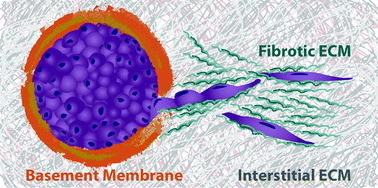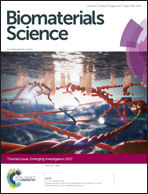Multicellular tumor invasion and plasticity in biomimetic materials
Abstract
Cancer cell invasion through the extracellular matrix is associated with metastatic spread and therapeutic resistance. In carcinomas, the detachment and dissemination of individual cells has been associated with an epithelial–mesenchymal transition, but tumors can also invade using collective, multicellular phenotypes. This malignant tumor progression is also associated with alignment and stiffening of the surrounding extracellular matrix. Historically, tumor invasion has been investigated using 2D monolayer culture, small animal models or patient histology. These assays have been complemented by the use of natural biomaterials such as reconstituted basement membrane and collagen I. More recently, engineered materials with well-defined physical, chemical and biomolecular properties have enabled more controlled microenvironments. In this review, we highlight recent developments in multicellular tumor invasion based on microfabricated structures or hydrogels. We emphasize the role of interfacial geometries, biomaterial stiffness, matrix remodeling, and co-culture models. Finally, we discuss future directions for the field, particularly integration with precision measurements of biomaterial properties and single cell heterogeneity, standardization and scale-up of these platforms, as well as integration with patient-derived samples.

- This article is part of the themed collection: Emerging Investigators 2017


 Please wait while we load your content...
Please wait while we load your content...